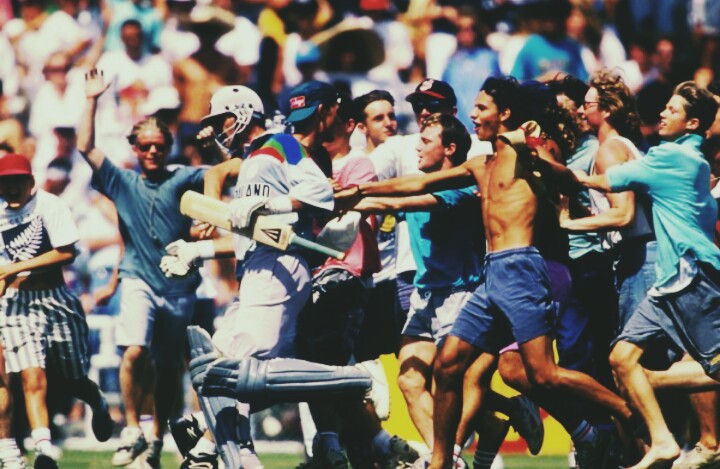Bashers Cricket Club
Farewell Martin Crowe
I grew up in the 80s when NZ had a golden age of test cricket, and there is no doubt it was led by the bat and later the intelligent captaincy, of Martin Crowe. He was a legend, so often the man carrying the whole side and country, and his passing this morning at 53 was far too soon.
I was at Eden Park for the semifinal of the ’92 World Cup and can still recall the chants of “We’re going to Melbourne!” echo around the terraces as we all watched him bat his way to a sublime 91. He looked certain to get his ton before he hurt his leg and was unfortunately run out by the runner. He never took the field and there was a surreal feeling of disbelief as Inzamam took the game with a punishing innings. Martin Crowe was the hero regardless of the result. It was the way he pulled together a team of average players and made them somehow compete on the biggest stage.
It now seems surreal that he’s no longer going to be contributing to NZ and world cricket with his insight and experience of the game. Thoughts and prayers to his teammates, friends and family. He’ll be missed.
The following interview is from 2008.
What is the first thing you look for when you are watching a batsman?
His eye and head position, his ability to stay balanced and therefore move off both feet, and the ability to play late – see the ball early and play it late. It’s not easy to allow the ball to come all the way to you and hit it at the last second as opposed to going hard at the ball. You have to do that – go hard – sometimes when you want to hit the ball in the air. But I would say head position, footwork, balance and playing late are the key.
What exactly does it mean, playing late and having extra time?
The greatest skill you have as a batsman is the ability to see the ball out of the hand. Once you do that, you have created time and are gathering information instinctively, processing it and making a decision on what to do. If you see it early, you have time, but if you see it late, you tend to play it early because you are searching for the ball. You are not decisive. This differentiates a very good player from a not-so-good player.
Can this ability be developed?
It’s a skill you’ve got to learn. A player in bad form is not picking the ball out of the hand. That is the first priority as a batsman: to see the ball from the hand, see it early. With different bowlers with different actions, at the moment of release. You’ve got to do your homework when you are facing new bowlers.
How much of it is pre-determined?
Any player who pre-determines is asking for trouble. Batting has to be an instinctive reaction after you pick the ball early. You should have a number of different options, particularly in a game where you are looking to score quickly, but if you have predetermined your shot, you are unlikely to pull it off.
Who are the best batsmen you’ve seen when it comes to picking up the ball early?
The two best I saw were Greg Chappell – he was a stylist – and Viv Richards – he was a powerhouse. They had wonderful strengths and powers of concentration and belief.
There were players that I liked to watch – David Gower, Mark Waugh. These were the players who just stroked the ball, but were not necessarily so successful. Sometimes they would come across as a bit lazy, perhaps, but they just had a style that was nice to watch.
Who were the bowlers you struggled to pick?
The two bowlers that I never really picked very well at all were Jeff Thomson and Michael Holding.
Holding, just for his change of pace. He could bowl 100mph or 70mph with the same beautiful, classical action. He was, I think, one of the first to develop a lot of different types of deliveries without discerningly changing his action. It’s very scary when you know he can bowl at 100mph and you are coming forward to a slow outswinger, because he is deliberately doing that. He is getting you forward, and you are thinking about that fast one. He was a very thoughtful, intelligent bowler.
Thomson was just a freak – a very unique action. You never really saw it.
I have a quote from Thommo on the first time he bowled at you. “I knocked his helmet straight off his head. It went to pieces and blood came out … I thought it was brains coming out. I think he was pretty happy to be alive!” Do you remember that?
(Laughs) Bruce Laird, at short leg, was the only man in front of the wicket. I was pretty much just out of school. Wearing a helmet was a new experience – let alone using a chin-strap. So the helmet just sat on my head without a chin-strap. I never really saw the ball. I had never faced anything remotely so quick. The helmet kept flying off and Bruce Laird kept going after it to get it!
There is one other bowler that I had trouble picking up. The guy who got me the most times in Tests [six] was Phil Defreitas. He had an action that was kind of delayed, which threw me a little bit.
In 1984 at Taunton you had a frightening experience facing Andy Roberts, didn’t you?
Oh yeah, it did frighten the death out of me. Roberts was bowling outswingers off 14 paces and he was just snicking guys out at the other end. When I got on strike, I treated him like I was playing [Richard] Hadlee in the nets. I would leave everything outside off stump, wait till he bowled at me before I clipped him for one or two, and not look to upset him. Once I was in for an hour and a half, he started to use his bouncers – he had two differently paced ones – and he also used the crease amazingly well. If he wanted to hit you, he could, at will. And he did. He hit me four or five times in the ribs.
He bowled me two bouncers in a row at one point, so I charged him and hit him back over his head for a six. That was it. It was game on. I remember Peter Willey at gully going “Oh dear … that was very silly of you.” Roberts warned me about what was coming. “You’ve got to watch now, be careful.” And he hurled two beamers at my head! I could see the whites of his eyes and I remembered what I had read about his anger. He taught me a big lesson about facing West Indies. I never faced anyone so intimidating.
How do you use that fear as a batsman? Sandeep Patil, the Indian batsman, once said that it was fear that pushed him to attack the fast bowlers.
I just worked out intellectually that to get on to the back foot – you needed to do that at Test level, particularly in that era – you had to be on the front foot. You had to be able to go back quickly, and a long way, to give yourself time to play it under your nose. So I got more on the front foot and more towards the bowler, the faster he bowled. I gave up going back and across. I couldn’t do that. I just wanted to remain still, go on the front foot and press back.
My motive was to survive and wear them down if I could. You sense that they can’t just keep on going forever. Even if there are four of them, there will be a time when they are in their second or third spells where they will not be as fast and menacing, and you can attack them a bit more.
What would you tell a young batsman who wants to handle the fear of pace?
I used a lot of affirmations. Obviously visualisation and preparation were vital to me when I tried and walk out to the middle feeling that I belonged. Then, when I was out there, because I had lots of negative thoughts, like lots of players do, my only way to deal with was use positive affirmations, and I would keep repeating those.
How does that work?
I developed a routine where I would go towards square leg, stand there, switch off and control my breathing. I sort of stayed in the “now” by rubbing my back or just focusing on my breathing, and I would go, “This ball, this ball, this ball, this ball.” Then, “Soft hands, soft hands, soft hands,” as I took my stance. Then I would look at the bowler and go, “Watch the ball, watch the ball, watch the ball.” Those were my three affirmations. The softer and the slower I spoke, the more relaxed I was. I used the affirmations so that no other thought could get in. And that’s how I controlled my concentration and my ability to see the ball.
Can you tell us a bit more about how a batsman gets into the “now”, the zone?
It’s a matter of form, belief and preparation. You are always preparing for the next innings or the next Test match or the next series. Everything you do in your life, you are preparing for the rest of your life.
I did a lot of visualisation, and I worked very hard in the nets. I gave myself a reason to feel confident that I could succeed against any bowler and any country. It became easier if I could sense that in a team environment we were playing well. The 1992 World Cup was one example. I saw the team respond well to my captaincy, and so it became easier to get into the zone. Once, in 1994, I was in bed for three weeks with flu and all I did was visualise. When I went out to bat after that I was in the zone!
How often were you in the zone?
It didn’t happen too frequently. I became a very conscientious batsman, very technical-minded. I had too much fear built in early on. If I had been picked at 22 [instead of at 19], it might have been a whole different career. In fact, from the age of 22 to 32 I averaged 54. But I had had such a bad start, and ended up having such a poor finish. Thirteen Test matches with just one hundred was very hard for me to put aside. If I were playing for Australia and at No. 5, it would have been a whole different game. But that’s all hypothetical. I am a New Zealander, and you feel the pressure in some ways like an Indian would here, because you are in a small village.
How did you come out of that slump at the start of your career?
It was not a slump. The fact was that I should not have even been there. Just 18 first-class games and I’m in the team. How ridiculous is that? Eighteen first-class games against basically club cricketers, and then suddenly playing [Dennis] Lillee, [Terry] Alderman and Thomson. The Achilles heel of New Zealand cricket for over 17-18 years has been our selection. It’s people with big egos trying to be the one that found the wonder boy, the next Sachin Tendulkar. [Chris] Cairns, [Adam] Parore, me, [Ken] Rutherford, we were not mature enough. We just haven’t grown up.
I had not been out of school, I had never been in a relationship with a girl – well I had been with a girl, but never in a relationship. I was still living at home, I had not been to university, and suddenly I am trying to learn how to live life by playing cricket. From the age of 14, when I started playing for the under-23 team, I was blown out of my mind trying to cope. People think you are coping well, but you’re not. And that’s why for the next 30 years, off the field, I had a string of problems with relationships and marriages, and brushes with coaches. Because I was not equipped, because I had never developed my emotional side properly enough till probably about three years ago, when I identified the problem and got help for it.
In these parts of the world, you do hear stories of [Javed] Miandad and Tendulkar playing so early. But how are you going to sustain that? If you’re going to have a 14-year career, why not have it when you are going to be physically and mentally mature? Twenty-two to 36 is perfect to have a long career. From 19 to 32, I was done, mentally and physically, and I had to miss out on three or four years of my best cricket. I was still batting well, but I was sick of all the politics and my body had given up.
What exactly were you thinking in that 19-22 phase? Was the fear of holding on to your place paramount? Were you frustrated that the runs were not coming? What were the other problems?
Oh, it was definitely the culture in the team when I came in that I wasn’t made very welcome. Only John Wright actually welcomed me into the team. The captain [Geoff Howarth] called me a show pony the whole time and treated me like shit. That didn’t help. Greg Chappell and Rod Marsh were nicer to me than my own team-mates. It was just not a good fit, and it cost me the ability to play more naturally through my career. It made me fearful, and to counter that I had to become more technically minded.
Is that a common trend among cricketers – that you are forced into getting technically minded?
I think it’s a fear of failure and humiliation. I was very humiliated in my first seven or eight Test innings. I don’t know about others. Some players, like Geoff Boycott or Rahul Dravid, have always been technical. For me, I shifted from the kind of player I was at 17 or 18. My first first-class hundred was made the day I was picked for New Zealand. It was a free-flowing 150 in about 120 minutes. I never ever played like that ever again.
Not even in the 1992 World Cup when we saw you advance against Wasim Akram and pull him for sixes?
Yeah, that. I wasn’t really slogging then. I was just putting my body in the right position, using the angle and the pace of the ball.
Speaking of Akram, he is on record saying you were the best batsman against reverse swing that he had ever seen. You would bat with a minimal back-lift, which was very crucial there. How did that develop?
The minimal back-lift came about because of playing in New Zealand. To survive on our wickets, I learnt that I couldn’t afford to have a big back-lift. I had to have a very light bat and get behind the line and make sure I was meeting the ball full face. I couldn’t hit through the covers as I would in Adelaide or the MCG, which I enjoyed when I went to Australia. At Lancaster Park or the Basin Reserve or Eden Park you just couldn’t afford to do that.
Talk us through those battles against Wasim and Waqar Younis in that 1990-91 Test series in Pakistan. Did you prepare in advance to tackle the reverse swing?
We had never heard of reverse swing before that. There was, of course, a lot of ball-tampering. It was happening after five overs, and I would be in at 10 for 2 on an average. I just learnt to get the bat down at the last minute.
I always had slightly open hips – pretty classical stance – which meant the body was never in the way. I knew where my off stump was, so reverse swing going out was no problem. I had to concentrate for the one that came in, attacking my pads and the stumps. I had to get bat on ball – particularly since I had been wrongly quoted as saying that I would rather have an Indian umpire than a Pakistani umpire. I never said that. The Pakistani umpires were out to get me, and they got me.
I batted nearly ten hours to get 108 [second Test, Lahore], so I didn’t frighten Wasim and Waqar – they just found it hard to get me out. I faced Wasim a lot. I got a lot of not-outs against him, even in one-day cricket.
You used Chris Pringle in the nets to help you prepare during that series. He resorted to reverse swing with slight tampering, didn’t he?
I noticed it in the second Test after I had played Abdul Qadir. It was the end of the over, and I picked up the ball and I went, “What the f*** is this?” There were three gorges in it. You could see right down to the white string. And the other side was smooth. One of our guys grabbed it and got a photograph of it. Intikhab Alam [Pakistan’s coach] came to the dressing room and grabbed the ball back. I complained to the Pakistan board about it. They just said it was due to the ball crashing into the hoardings. I said, “Bullshit. This is a green wicket for a start. They’re using bottle caps.” So I said, “Well, I have laid my complaint. If I don’t get anything done about it, we will fight fire by fire.”
We started to practise in between the second and third Tests, openly tampering with the ball. I said to everybody, “I have made my complaint and I can’t do anything more. In the spirit of the game, I am actually going to expose it, and hopefully it will then be dealt with.
I usually bowled inswing, and I said, “Watch this, guys,” and with the same grip I would bowl outswing. I said, “This is like a new toy.” Pringle was an average medium-pace swing bowler, and all of a sudden he got it to reverse swing and he was having a great time.
It took us an hour into the Faisalabad Test to get into a huddle in the drinks break and start working on it. We used the bottle tops. Pringle got seven wickets before lunch. The umpire said, “Fine, it’s the same for both sides.” I wrote a complaint to the board and also to the West Indian management, since they were to arrive in three days’ time. I wrote a letter to Desmond Haynes.
The point is that they didn’t need to do it against us. We were the worst side to leave New Zealand in 25 years, probably. Imran Khan didn’t even play because he knew we were pathetic. I was the only recognised batsman. And they were green wickets anyway. But it made the challenge even greater.
The rules are fine now, and they have dealt with it. Just for those two or three years it got out of control.
How did you approach playing spin?
For any young guy, particularly when you are in a medium-pace country like New Zealand, facing spin is an ongoing art. County cricket helped me with that. Facing John Emburey, Phil Edmonds, Derek Underwood, all the wonderful county pros in the eighties, helped. I was playing spin every day.
I would use my feet a lot, going down the wicket to the pitch of the delivery. I used to then try and force them to bowl short, and I would pull and cut a lot. Against legspinners I wouldn’t go down the wicket so much because they had the ability to turn it away a lot more, and so I would tend to pull and cut.
Did you make any technical adjustments while playing spin?
I would open my up stance a lot. I felt that the idea of staying side-on was ridiculous against spin. If you watched Javed Miandad, he was the best at it. I copied his stance when it came to playing against spin. Not as much as [Shivnarine] Chanderpaul, but a lot more than what I would do against the quicks.
How exactly did that help?
I didn’t worry about my back foot being square. Because you are not looking to go on the back foot to defend and have a strong base. What you are basically doing is making sure that the body is not going to come in the way of hitting the ball. So you are defending in front of you. It’s really head and hands; you don’t have to go around your front pad.
This was for both legspin and offspin?
Everything. But I never really rated the offspinners. They just came into the hitting zone, which was leg side for me. Watching Miandad bat was the best education I got in playing spin.
Who did you pick things up from to play fast bowling?
I talked to Greg Chappell a lot, and Graeme Pollock. I modelled my batting on Greg. I didn’t play a Test match against Sunny [Gavaskar], but I have seen footage, and I talked a lot to him when I was young. He would talk about how, before he went out to bat, he would put his head against the wall to make sure his head was level. I used that.
Did you pick anything from Viv Richards?. Was he an influence?
You couldn’t really model your batting on him. He was unique and very fearless, whereas, as I have already explained, I wasn’t. He never failed, really. He had it a little rough when he was in Australia in 1975, but he got out of that and after that he dominated the world for ten years. The thing I learned from him was that you need to play forward until you are forced back, rather than go back and across.
What was your preparation routine like? Sachin Tendulkar wears a helmet to try and get into the focus zone.
Sleep! I never fought tiredness or my anxiety. I would just close my eyes. My philosophy was that when I was in, if I saw the first ball out of the hand, I would be fine. So I worked very hard on seeing the first ball, and if I saw it, I would get confident.
So you were not the type who would sit and watch the play?
I would, but I wouldn’t fight if I felt the need to rest my head.
Was there a routine you had before you went out to bat?
No, I would just try to relax. My philosophy was to get to the middle quickly. Greg Chappell told me to have very strong body language. I would loosen up my shoulders a bit. I would feel tall and lift my height up, and I wouldn’t show any sort of tentativeness. So I would walk out basically saying, “I am ready.” Even if you are not feeling it, you can talk yourself into it. Ideally, you are going out there with a genuine feeling of “I will score runs, and send a message across to the opposition.”
For example, with Mushtaq Ahmed in the 1992 World Cup, I got in his eyeline and suggested with my body language that he was bowling to someone with a big reputation. It’s not an ego thing, it’s kind of making aware yourself that it’s going be him versus me for the next half an hour.
On a related note, some batsmen show their pain when they get hit, while others don’t. Tendulkar tries not to, while Brian Lara has no problem in calling attention and showing pain. What were you like?
Coming into international cricket I was emotionally unstable, but I learnt to control my emotions. I am an emotional person but I was able to hide all that. I never got involved in talking, and I tried to play very non-judgementally. If I missed the ball, it was gone, I was quickly walking to my square-leg position and focussing on the next ball. So I stayed in the “now”.
It depends on the individual. If you get a nasty one on the fingers – all my fingers have been broken – you can’t do anything but try and get the feeling back and get treatment. It’s the worst thing for a batsman, to have your hands smashed. I have had a few in the ribs from the West Indies bowlers, and I have swallowed it by taking a big, deep breath. Sometimes you can’t help it. Sometimes there is too much pain to hide, no matter who you are.
Was there anything apart from that Roberts incident where you went, “Oh, this is a real test.” A really special knock against fast bowlers? I have faced the West Indies seven times in Test matches and got three hundreds. The best ones were in New Zealand , particularly at Eden Park. [Malcolm] Marshall, [Courtney] Walsh and [Joel] Garner on a green wicket. Everything is tested.
I had a great summer leading into that Test series; I had 1300 runs from eight first-class games. I had the best preparation, and I played really well. That Roberts innings really set me up to play West Indies later.
Marshall was the greatest all-round bowler I faced. He had the ability to bowl everything. He was thoughtful, fast, he could go round the wicket or over the wicket. Considering his height, he was incredible. You were always in a contest.
Who else?
Wasim Akram. I remember facing him in his first Test match, and he got ten wickets in the second. He was a freak, right from the first day he played first-class cricket.
Shane Warne – I knew he would be a great bowler. There was Hadlee as well. Holding, Lillee and Thommo would be there in that bracket as well. And you had magnificent bowlers like [Ian] Botham and [Bob] Willis.
I played in Glenn McGrath’s first Test match and said straightaway that he looked like a young Richard Hadlee.
How would you play McGrath in Twenty20?
I think you have to forget your stumps in Twenty20. You’ve just got to bat down the line the bowler will bowl. To me, my strength is the on side, and so I would create an angle to hit there. There is no point in batting on middle if he is going to bowl a foot outside off stump. I would stand on off stump, even outside off. If he wants to hit my leg stump, then good luck. He probably has only three on the on side, and I am strong there.
You used to get behind the line of the ball. Is that really critical?
Some players these days like to stay beside the line of the ball. That’s because of the desire to keep the score moving. [Virender] Sehwag stays beside. He is a freak. What he does is, he hits the ball late, has a lovely imagination and backs himself. He has proven that that technique can work. You can’t score 300 twice without doing a few things right.
If I was an Australian or an Indian, I wouldn’t be so adamant in getting behind the line of the ball, but in New Zealand conditions you need to get behind.
Can you talk about the ideal bat grip? Tendulkar uses a lot of bottom hand, while the likes of Adam Gilchrist hold it higher up.
I learnt not to grip it like an axe, but with a little bit of an open palm so that I could sweep my hand up and under the ball. The grips are pretty individual. So if I see a young man with a certain grip I wouldn’t change it unless it’s really bad. You have to weigh it up with his body structure and what he is trying to do.
What’s your favourite shot?
The straight drive on the on side of the pitch, back past the non-striker.
How aware were you of statistics during your career?
I probably learnt from Hadlee to have goals. It wasn’t so much the stats, but I needed goals and stepping stones to keep going every day for 14 years. Scoring hundreds was a major part of it.
I competed well. Especially after the kind of start I had, I had to get it back. I was never going to average 50 after averaging so poorly at the start. The closest I got was 48 after the innings of 299.
That doesn’t bother me. I’m happy with my career except for the fact that I finished on a downer, with an injury. It’s not my regret that I was picked early. I should have told them to go jump, wait till 22, but who does that? I did play too long in the end – a year too long. I should have probably retired after the England tour in 1994 [where he scored 142 at Lord’s, on one leg] because hobbling on one leg was never much fun. I should have retired at the end of 70 Tests.
Sledges
Sledge
You must be logged in to post a comment.









RIP Hogan!